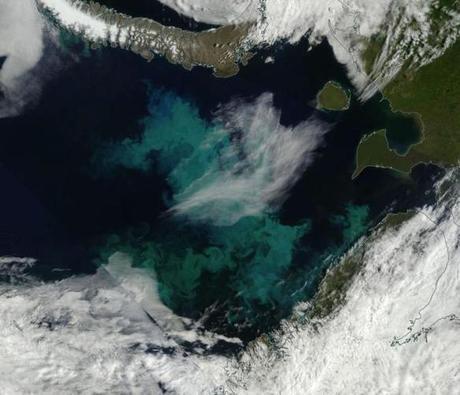
The last time Earth experienced a Great Dying was during a dangerous transition from glaciation and to hothouse. We’re doing the same thing by burning fossil fuels today. And if we are sensitive to the lessons of our geological past, we’ll put a stop to it soon. Or else doesn’t even begin to characterize this necessary, moral choice.
The Great Dying of 200 million years ago began, as it does today, with a great burning and release of ancient crabon. The Siberian flood basalts erupted. Spilling lava over ancient coal beds, they dumped carbon into the air at a rate of around 1-2 billion tons per year. Greenhouse gasses built in the atmosphere and the world warmed. Glacier melt and episodes of increasingly violent rainfall over the single land mass — Pangaea — generated an ocean in which large volumes of fresh water pooled at the top. Because fresh water is less dense than salt water, it floats at the surface — creating a layer that is resistant to mixing with water at other levels. Sourced through Scoop.it from: robertscribbler.com
GR: Excellent post by Robert Scribbler comparing today’s mass extinction with the great Permian-Triassic episode 200 million years ago. That one eliminated more than 99% of all life on Earth. Recovery was slow; on land, ecosystems took 30M years to recover. Today, fossil fuel burning is quickly taking us toward the same conditions that prevailed over life during the great Permian-Triassic event.

